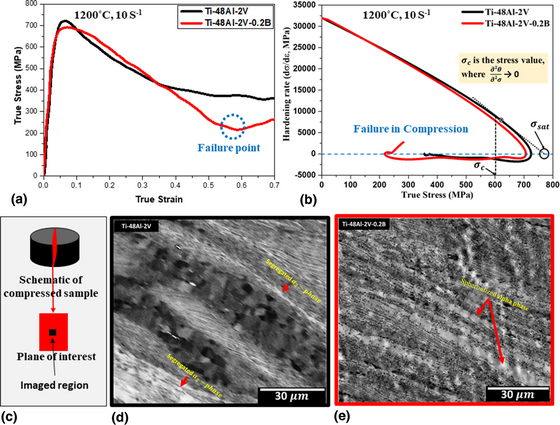Crossref Citations
This article has been cited by the following publications. This list is generated based on data provided by
Crossref.
Bibhanshu, Nitish
Rajanna, Rashi
Bhattacharjee, Amit
and
Suwas, Satyam
2021.
Phase Transformations in Third Generation Gamma Titanium Aluminides: Ti-45Al-(5, 10) Nb-0.2B-0.2C.
Metallurgical and Materials Transactions A,
Vol. 52,
Issue. 12,
p.
5300.
Han, Jiaxing
Liu, Yaru
Cheng, Xu
Wang, Jiawei
Yao, Xunjie
Zhang, Meiling
Zhang, Bo
Liu, Dong
and
Wang, Yudai
2022.
Microstructure characterization of gradient composition between TC25G and TiAl alloys prepared by directed energy deposition technique.
Materials Letters,
Vol. 321,
Issue. ,
p.
132411.
Bibhanshu, Nitish
Gussev, Maxim N.
Massey, Caleb P.
and
Field, Kevin G.
2022.
Investigation of deformation mechanisms in an advanced FeCrAl alloy using in-situ SEM-EBSD testing.
Materials Science and Engineering: A,
Vol. 832,
Issue. ,
p.
142373.
Feng, Rui
Bao, Youlin
Ding, Yongshun
Chen, Minghe
Ge, Yan
and
Xie, Lansheng
2022.
Three different mathematical models to predict the hot deformation behavior of TA32 titanium alloy.
Journal of Materials Research,
Vol. 37,
Issue. 7,
p.
1309.
Xuanyuan, Yaodong
Lv, Chengcheng
Chen, Cai
Yan, Yinbiao
and
Yang, Sen
2022.
Effect of thermomechanical processing on microstructure characteristics of γ-TiAl-based alloy.
Materials Science and Technology,
Vol. 38,
Issue. 13,
p.
977.
Liu, X.
Song, L.
Stark, A.
Pyczak, F.
and
Zhang, T.B.
2023.
In-situ synchrotron high energy X-ray diffraction study on the internal strain evolution of D019-α2 phase during high-temperature compression and subsequent annealing in a TiAl alloy.
Journal of Materials Science & Technology,
Vol. 163,
Issue. ,
p.
212.
Xu, Wenxin
Zhao, Zhanglong
Wang, Yibo
Liu, Na
Li, Sen
and
Huang, Xingyu
2023.
Correlation between the strain rate sensitivity exponent m and microstructure evolution during hot deformation of an as-cast TiAl alloy.
Materials Characterization,
Vol. 203,
Issue. ,
p.
113050.
Ellard, J.J.M.
Mathabathe, M.N.
Siyasiya, C.
and
Bolokang, A.S.
2023.
Vacuum melting of compressed powders and hot rolling of the as-cast Ti-48Al-2Nb-0.7Cr-0.3Si intermetallic alloy: Mechanical properties and microstructural analysis.
Journal of Manufacturing Processes,
Vol. 101,
Issue. ,
p.
1214.
Bibhanshu, Nitish
Rajanna, Rashi
Bhattacharjee, Amit
and
Suwas, Satyam
2024.
Investigation of Survived Solidification Features After Hot Isostatic Pressing in Third Generation γ-TiAl Alloys: Ti–45Al–(5, 10)Nb–0.2B–0.2C.
Metallurgical and Materials Transactions A,
Vol. 55,
Issue. 3,
p.
854.
Nath, Prekshya
Sujith Kumar, S.
Mathews, Nidhin George
Bhattacharjee, Amit
and
Sen, Indrani
2024.
Effect of microstructure and temperature on the bulk and small-scale deformation behavior of 2nd and 3rd generation advanced intermetallic TiAl alloys.
Materials Characterization,
Vol. 207,
Issue. ,
p.
113585.
Yu, Yonghao
Kou, Hongchao
Zhang, Zilong
Xu, Xiaoxuan
Wang, Yarong
and
Li, Jinshan
2024.
Deformation behavior of core–shell-like structure in β-solidified TiAl alloy during isothermal compression.
Materials Letters,
Vol. 357,
Issue. ,
p.
135637.
